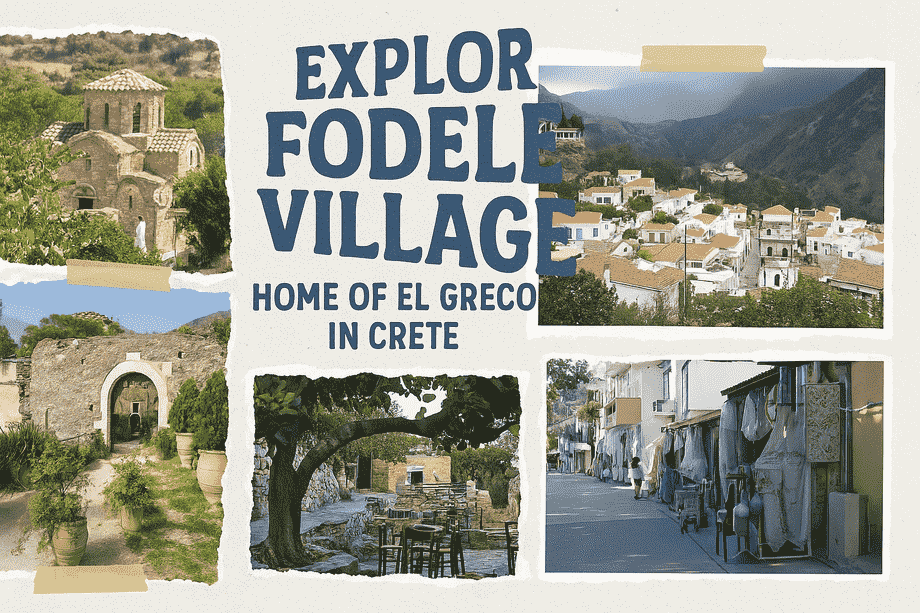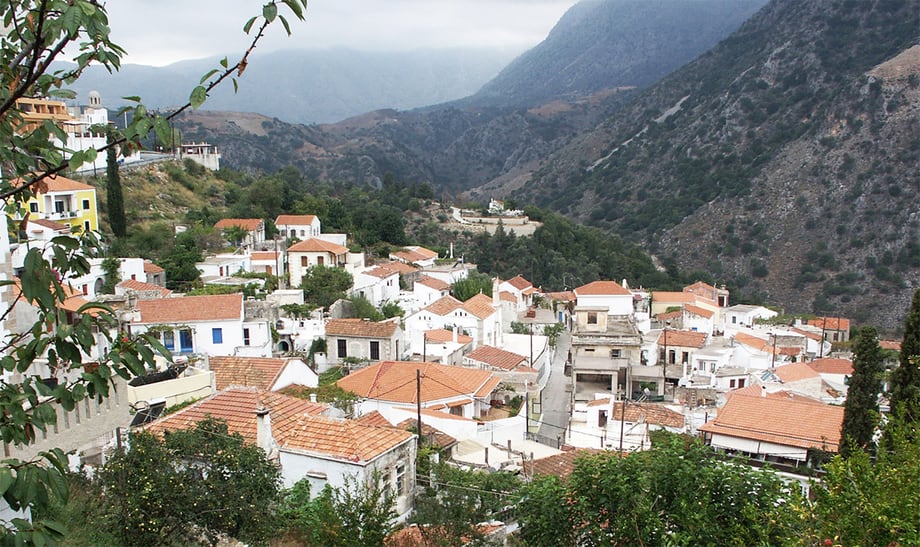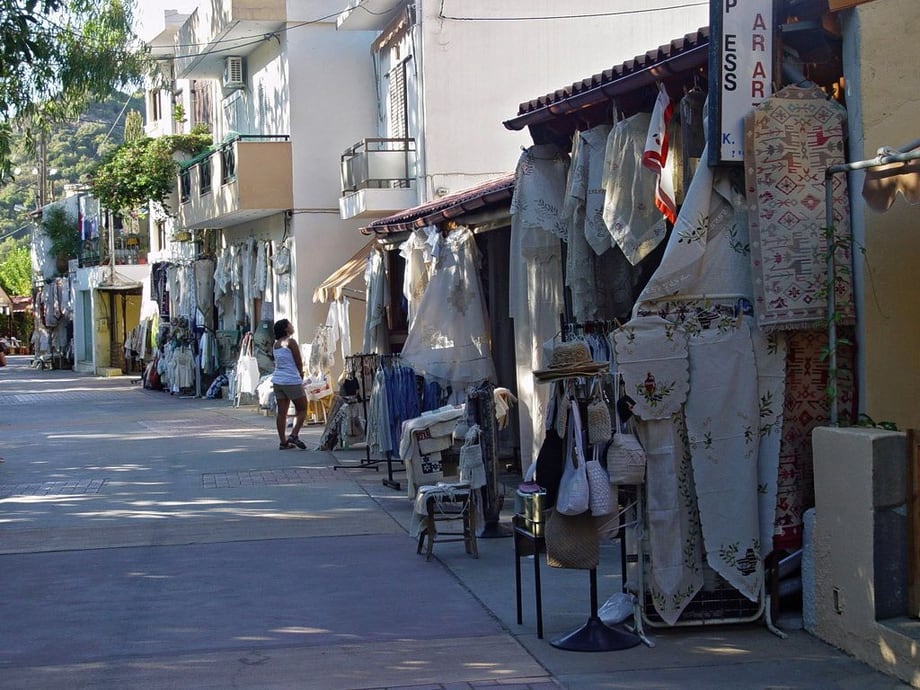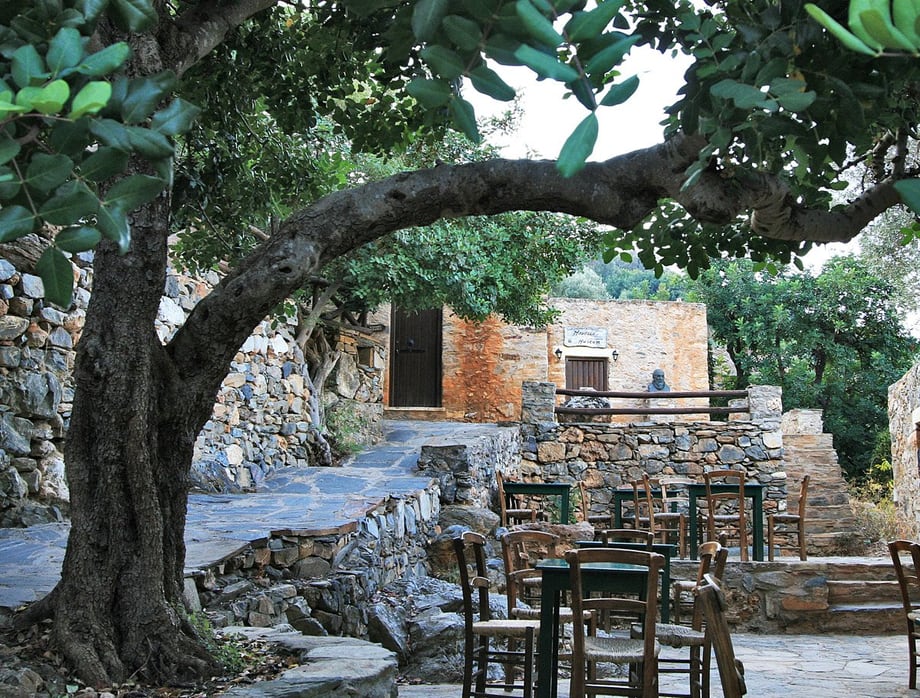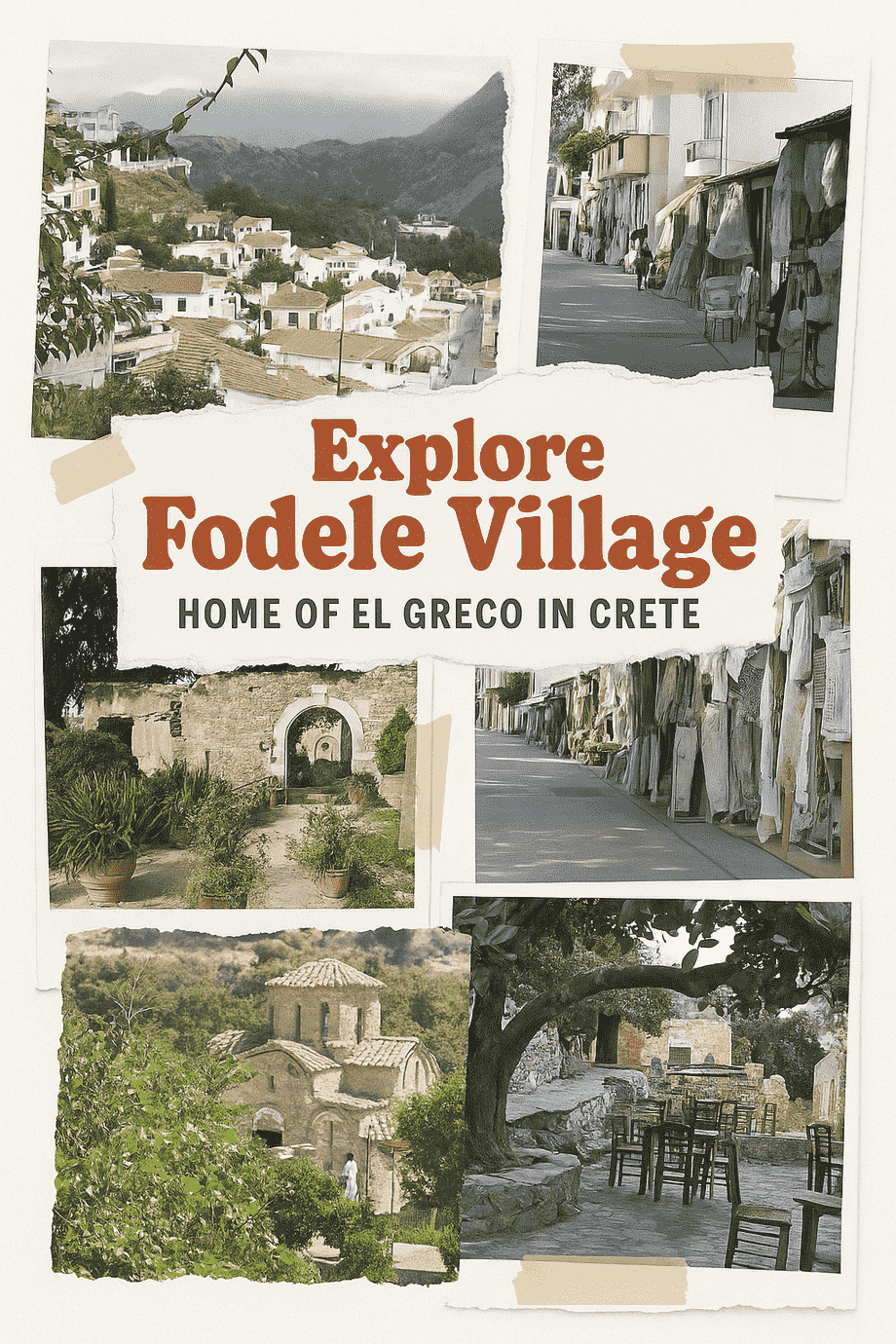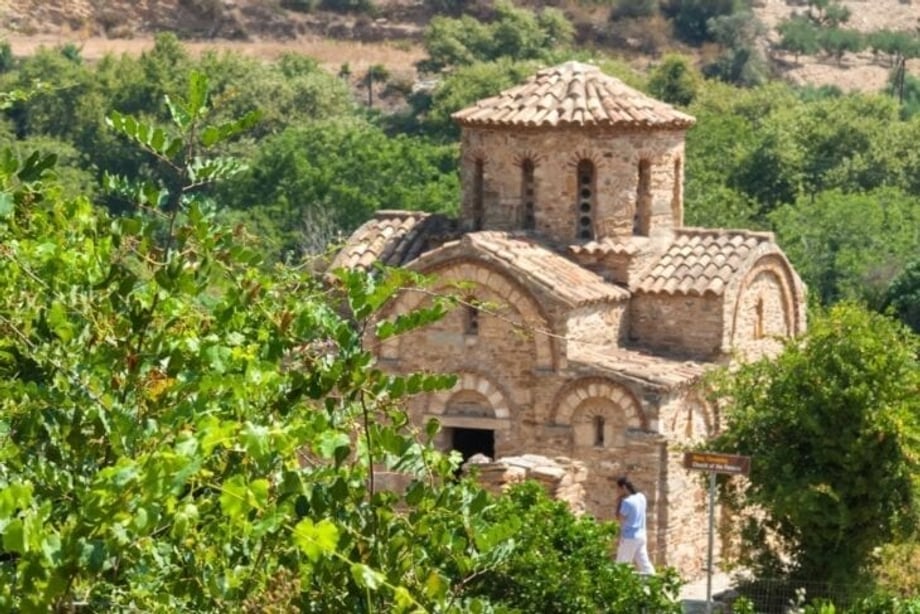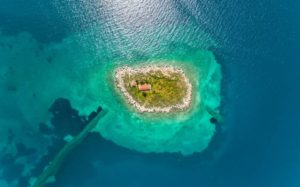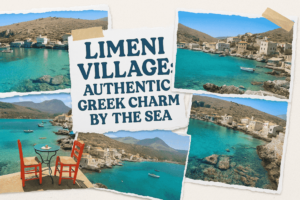Explore Fodele Village – Home of El Greco in Crete
Tucked into a green valley just 25 kilometers west of Heraklion lies Fodele, a quiet village full of charm and rich history. Surrounded by orange groves, olive trees, and rolling hills, Fodele feels like a place forgotten by time. It’s a village that offers a completely different pace of life compared to the bustling beach resorts nearby. It’s also believed to be the birthplace of the famous painter El Greco or Dominikos Theotokopoulos, better known as El Greco. If you want to experience a more authentic side of Crete, Fodele is a perfect choice.
How to Get There
Fodele is easy to reach by car from Heraklion. The drive takes about 30 to 40 minutes. You’ll travel along the northern coastal road and then head inland on a scenic, winding route through hills and forests. Public buses do pass near the area, but they may not take you directly into the village, so renting a car or joining a small guided tour is the best option. The road into the village is narrow but well-paved, and parking is available near the central square or by the river.
First Impressions of Fodele
The first thing you notice when arriving in Fodele is the calm. There’s a peaceful energy here that’s instantly soothing. The village is built along a narrow valley with a small river running through it. Colorful flowers spill over stone walls, and the streets are lined with trees. You’ll see locals sitting in shady cafés, sipping coffee or playing backgammon. Traditional houses with tiled roofs and whitewashed walls create the perfect postcard view.
The Legend of El Greco
Fodele is proud of its connection to El Greco, and you’ll find signs throughout the village pointing to his alleged birthplace. While historians debate whether he was born here or in Heraklion, the locals fully embrace the legend. You can visit the El Greco Museum, a small but charming spot located a short walk from the village center. The museum is in a reconstructed traditional home and includes reproductions of the artist’s works, along with information about his life and legacy. Admission is just a few euros, and the quiet atmosphere makes it feel like you’ve stepped back in time.
Stroll Through the Village Center
Fodele’s central square is small but lively. Here, you’ll find a few tavernas, artisan shops, and a beautiful stone fountain. Don’t be surprised if a local greets you with a smile or invites you in for a glass of homemade raki. The shops sell handmade ceramics, woven fabrics, and local honey. The tavernas serve traditional Cretan dishes, and many use ingredients grown in the surrounding valley. One of the most famous local specialties is orange pie, made with fresh fruit from the village’s own orchards.
What to Eat in Fodele
Food in Fodele is simple, fresh, and satisfying. Start your meal with dakos – a Cretan salad of barley rusk, tomato, feta, and olive oil. Follow it with grilled lamb, rabbit stew, or stuffed vine leaves. Vegetarian options are easy to find, with dishes like gemista (stuffed tomatoes and peppers) and fava (split pea puree) common on every menu. Don’t forget dessert – the orange pie is a must-try, often served with a scoop of local vanilla ice cream. Most meals cost between 10–15 euros per person, including drinks.
Visit the Church of Panagia
Just outside the village, about a 10-minute walk from the museum, you’ll find the Church of Panagia. This tiny, 11th-century Byzantine church sits among olive trees and offers beautiful views of the surrounding hills. The church is known for its preserved frescoes and quiet surroundings. It’s a lovely spot for photos and a moment of reflection. Bring a bottle of water and wear comfortable shoes, as the path can be uneven in places.
Best Time to Visit
Fodele is beautiful year-round, but spring and autumn are ideal. In April and May, the valley is green and full of blooming flowers. The weather is warm but not too hot, and it’s a great time for walking and exploring. September and October offer harvest-season treats and fewer crowds. Summer can be hot, especially in July and August, but the shade from the orange trees and the cool river breeze make it bearable. Winters are mild, though some businesses may close during the off-season.
Local Culture and Festivals
Like many villages in Crete, Fodele celebrates its heritage with festivals throughout the year. The biggest is the Orange Festival, held in late spring or early summer. The entire village takes part, with music, dancing, and endless plates of food made with local citrus. If your visit lines up with the festival, it’s worth staying overnight to enjoy the party atmosphere. Local musicians play Cretan lyra and lute, and everyone is welcome to join the dancing.
Walks and Nature Trails
Fodele is surrounded by nature, making it perfect for easy hikes and walks. One of the most popular trails leads through the valley past old watermills and citrus groves. Another path takes you up into the hills for panoramic views of the sea. Pack sunscreen, good walking shoes, and plenty of water. These trails are quiet and peaceful, offering a great chance to experience Crete’s natural beauty away from the crowds. Birdsong, blooming wildflowers, and the scent of orange blossoms are your constant companions.
Staying Overnight
While most visitors come for a day trip, spending a night in Fodele offers a deeper experience. There are a few guesthouses and small hotels in and around the village. These are usually family-run, cozy, and affordable, with prices ranging from 40 to 80 euros per night. Waking up to birdsong and the sound of the river is a real treat. Some accommodations even include breakfast with local cheese, honey, and homemade bread.
What to Pack
Fodele’s setting means you’ll do a bit of walking, so comfortable shoes are essential. Bring light layers if visiting in spring or autumn, as mornings and evenings can be cool. A hat and sunscreen are recommended in summer. You’ll also want a reusable water bottle and a camera – this village is extremely photogenic. If you plan to hike, a small backpack and walking poles might be useful. In cooler months, pack a light rain jacket, just in case.
Tips for Visiting
Start your visit early in the day to enjoy the village before the afternoon sun gets strong. Bring cash, as some small shops and cafes may not accept cards. If you’re driving, be patient with the narrow roads and give way to any local farmers or animals. Don’t be shy about greeting people – a simple “Yassas” (hello) goes a long way. Finally, take your time. Fodele is not about rushing from site to site. It’s a place to slow down and soak up the atmosphere.
A Peaceful Escape on the Island
Fodele offers a slice of real Crete that’s becoming harder to find. It’s a place where history, nature, and art all come together in one beautiful valley. Whether you come for a quiet walk, a meal in the shade, or to connect with the legacy of El Greco, you’ll find something special in this little village. It’s perfect for travelers who prefer authentic experiences, scenic views, and a slower pace. So next time you’re in Crete, take the detour inland – and discover the timeless beauty of Fodele.

